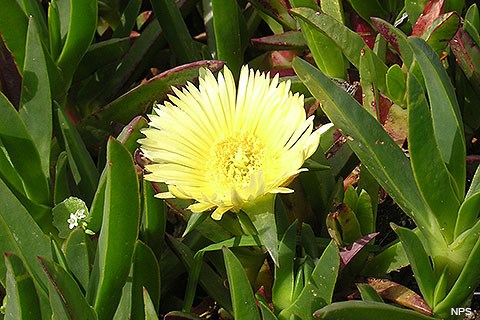
The Seashore has more than ten nonnative species of animals such as mammals, reptiles, and marine organisms. Of the over 900 species of plants in Point Reyes National Seashore, approximately 300 are nonnative. Of those, at least thirty are invasive enough to threaten the diversity of native plant communities in the Seashore. The Seashore also supports fifty-one special status (rare) plant species, many of which are directly affected by invasive nonnative species. Exotic species can have severe impacts on natural plants and animals and ecosystems. Parks like Point Reyes are specifically mandated to control exotic species "up to and including eradication" of a population if that species does not meet an identified park purpose and if such control is "prudent and feasible." Only through the removal of exotics and other changes resulting from human disturbance can the NPS return its park units to the most natural condition possible and meet its mandate to preserve them in this condition for future generations. To learn about the nonnative deer that used to be common at Point Reyes, visit our Exotic Deer page. To learn about nonnative plants at Point Reyes, visit our Exotic/Invasive Plants page. To learn about invasive & non-native species at national parks, in general, visit the NPS's Invasive & Non-Native Species subsite. Learn more about invasive species in the Fall 2004 Special Issue of Park Science and on their Invasive Species page. Please visit our Help Stop the Spread of Non-Native Species page to learn how you can help prevent the introduction and spread of non-native plants and animals. Visit the National Park Service's Invasive & Non-Native Species site to learn even more. Science & Research Project SummariesFrom 2006 to 2018, Point Reyes National Seashore and Pacific Coast Science and Learning Center (PCSLC) staff and communication interns assisted scientists conducting research through the PCSLC and the San Francisco Bay Area Inventory & Monitoring Network to produce a series of Resource Project Summaries, seven of which were, in part, about non-native species at Point Reyes. These one- to two-page summaries provide information about the questions that the researchers hoped to answer, details about the project and methods, and the results of the research projects in a way that is easy to understand.
MultimediaListenOn August 15, 2024, KQED's Bay Curious podcast published an article and a podcast entitled "Pretty, but Not 'Nice': California's Invasive Ice Plant" about ice plant at Point Reyes National Seashore and efforts to remove it. Watch
Visit our keyboard shortcuts docs for details
Native species, non-native species, invasive species, pests....what’s the difference? Don’t worry, we break it down for you in this video. |
Last updated: August 29, 2024
